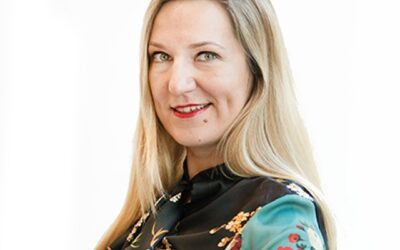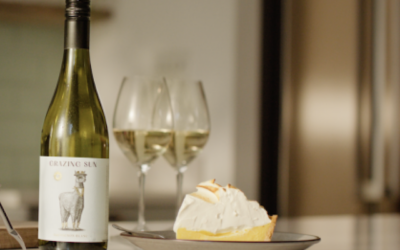Last month, digital-first content company Cowshed Social relaunched as Cowshed Collective, a move which signals a new phase of expansion. Primarily positioned as a bridge between brands and talent, the new structure paves the way for closer ties with creators, a move into social commerce and a diversified content origination model. This week, The Drop caught up with managing director Matt Ford to learn more about the new-look business and get some insights into where the industry is heading.
Can you briefly summarise the changes you’ve made to the business?
MF: In effect, Cowshed Collective is a relaunched business based around four main pillars. Cowshed Studios is our production arm and Cowshed Social is our social agency division. In addition to these areas, which were already core to our operations, we have launched Cowshed Creators and Cowshed Ventures.
Tell us how Cowshed Creators works
MF: To date, most of the work we have done has been talent-led branded content for brand-owned channels. The work we are probably best-known for is the content we produce for Footasylum’s YouTube channel, which currently has around 2 million subscribers. But we also have successful partnerships with a range of other brands including KFC, Sports Direct and Chelsea Football Club [the firm is currently making series two of a series called Clubhouse]. In the process of doing this work, we have formed relationships with leading creators like Beta Squad, Pubity and Channel 4.0 – and have started producing content for them. So the launch of Cowshed Creators really evolves out of that. Instead of just focusing on content production for brand channels or media owners, we’re also going to produce branded content for creator-owned channels. We think the market is moving in this direction – and we see it as a really interesting way for brands and talent to work with each other.
Why does it make sense to launch this division now?
MF: We’re not trying to reinvent the wheel, but I’ve noticed in the last year or two that when brands brief a publisher or media owner, the response is always a talent-led idea. So this is about tapping into that interest in talent-led branded content and campaigns, but putting it on the talent’s own channel. The advantage of this is that the brand engages directly with the talent’s audience and gets a closer affiliation.
Does this mean you’re looking to partner with more creative talent?
MF: We’re a small business, so we don’t want to overwhelm ourselves by taking on too many talent relationships. But within reason yes. To date, we have had success working with social talent that we have booked to appear in shows, and then building a relationship with them from there. In addition, we will be looking to sign up mainstream media talent and social-first talent that is ready to go to next level.
You mentioned working with mainstream as well as social talent. Who are you thinking of? Are there any particular pools of talent you are looking at?
MF: We’ve only just started developing the business plan and structure in this area, but we are talking to a few people. Think in terms of Saturday night mainstream talent in the UK, probably in areas like entertainment and sport, with a social presence.
What does the new structure mean for the existing line of work; creating branded content for client-owned channels – eg Footasylum and KFC?
MF: That business is still really important to us and we see it as a growth area. Our message to brands is that they don’t need to borrow other people’s audiences any more. With the right content, they can grow their own. We’ve grown Footasylum’s YouTube channel to the point that audiences spend 2.5 hours a month there.
Tell us more about how this brand channel model works.
MF: To a large extent it comes down to what the client wants and how much budget there is. But typically we will make hero content for the YouTube channel that can be up to an hour in length. We then create cut downs for YT Shorts, Instagram and TikTok, and potentially Facebook and Twitter. It might also be possible to create a Snapchat show off the back of it. Within this ecosystem, what’s really interesting is the way that short form on TikTok drives a lot of traffic back to the YouTube channel.
Does the content carry a lot of overt brand messaging?
MF: This is another area that depends on what the brand is trying to achieve. Footasylum’s priority is for the talent in the content to be wearing its clothes, but aside from that they tend to be quite relaxed about messaging. What we aim to do is build engagement by entertaining the audience – so that the brand can go back to that audience at a later time with some kind of direct messaging (for example an offer). Where it makes sense, we encourage clients to use snippets of our content in that follow up messaging. Not only does this save on ad production costs, but there are benefits in maintaining some editorial continuity. Overall, the strategic ambition is that by building a level of loyalty through the content, audiences will be more receptive.
Can any brand have the kind of success you’ve had with Footasylum?
MF: Footasylum looks quite natural in this arena because it is a fashion brand. It can afford to go softly softly with branding as long as its clothing is present. The branded channel concept might not be the right approach for some brands, but a lot have an interesting story to tell. I think a key message is that you need to be brave if you want to build community and affinity with younger audiences through social channels.
Do brands need to take a different approach when creating branded content for their own channels compared, for example, to media owner or creator channels?
MF: Brands have a bit more licence to be overt with messaging on their own channels – whereas they need to obey certain creative rules when working with creators, publishers or media owners. But that doesn’t mean brand-owned channels can just be a dumping ground for ads and one off specials. The real opportunity is to create an always-on presence that is entertaining and establishes a genuine connection.
In practical terms, how will you grow this side of the business?
MF: Firstly, we’re going to go out and actively encourage brands to work with us. We haven’t had an outward facing commercial team until now, so we are investing in a sales team. We occupy a unique position in the market, so I think we have a good story to tell. We’re also going to put more effort into talking with media agencies. We want to become a full service proposition that they can pitch to their clients.
Your business is centred on branded content, but given your skillsets do you envisage expanding into other spheres? Publishing perhaps?
MF: We’re not a publishing business. Nothing is off the table, but that’s not where we are right now. But we do have a well-equipped content studio of 15-16 people that scales up and down as required. Within that, we have an original content development capability, so there is scope for us to take ideas to platforms along the lines of a traditional commissioning model. We are about to launch some shows on Snapchat. I can’t provide details at the moment, but that’s a new development for the business.
Can you explain the Cowshed Ventures in a bit more depth? What kind of companies are you interested in partnering through this division?
MF: The idea behind Ventures is that we work with third party social commerce businesses via a services for equity agreement. We help them accelerate the growth of their business online via social and in return we take a stake in the business. To illustrate our thinking, we have already partnered with one venture, Loved Ones Forever, which specialises in photo restoration. They started in social and grew their business that way. The beauty of this business is that they have created a strong social commerce business that has the potential to create rich content off the back of what they do. We haven’t identified specific areas we want to be in, but that model is a good indicator. Can the business in question survive in social commerce, and does it have a product that lends itself to making content that resonates in the long-term?
You’ve only recently joined Cowshed Collective from Channel 4. Before that, you worked at the BBC and Unilad. What’s the attraction of being here?
MF: I loved working at Channel 4, but it’s great to be back in a small agile business with a startup culture. You’re freer to make quick decisions, create a plan and take it to market. If we spot a trend, we can react immediately with an innovative response.
What key trends are you talking about in the office right now?
MF: The continued growth of TikTok is clearly a major development. So we are doing more short form content, while continuing to push long form. The other big emerging trend is the impact of AI. What does that mean for ideation, content creation and channel management? We’re only just starting to glimpse the future.





